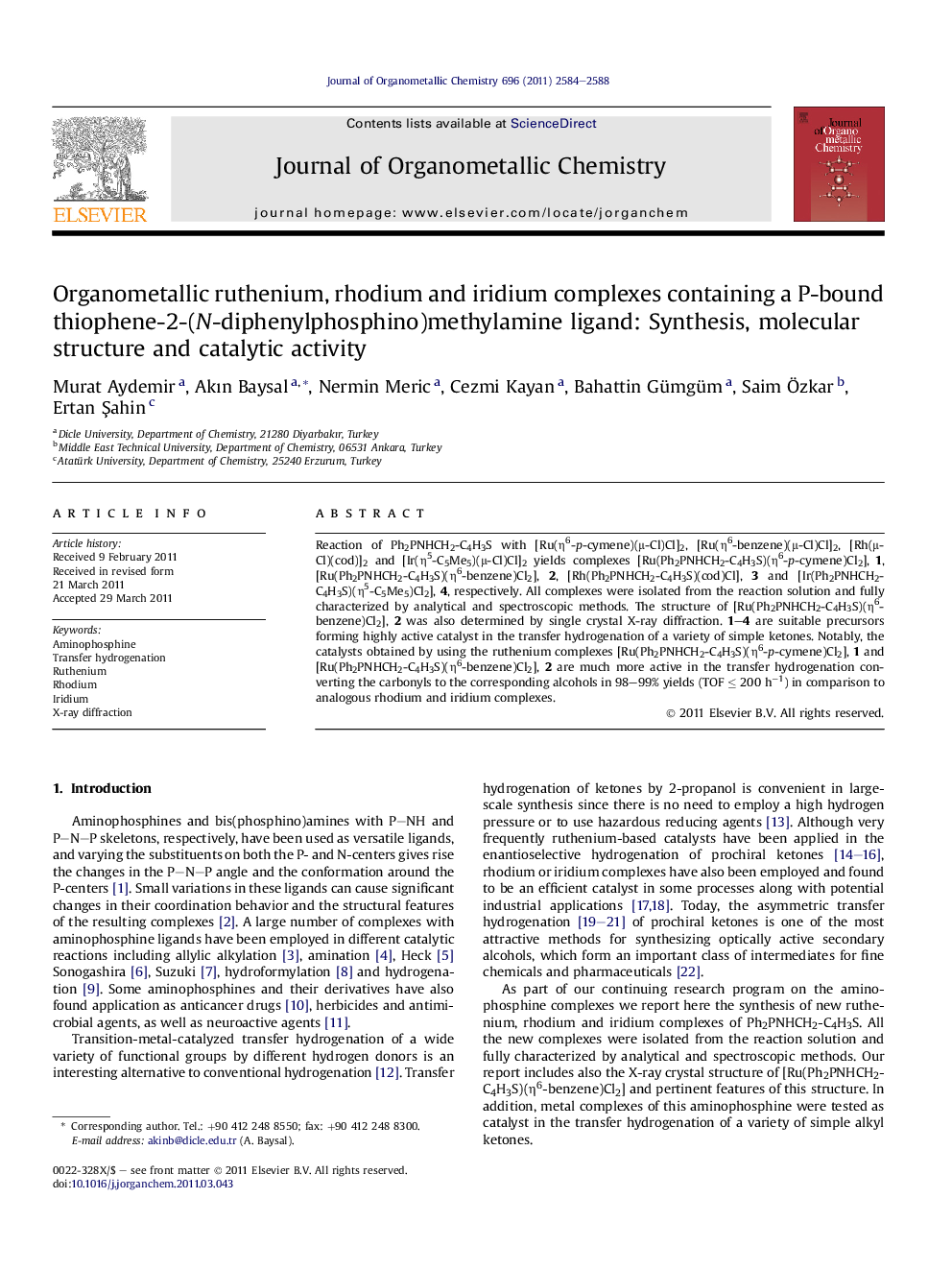| Article ID | Journal | Published Year | Pages | File Type |
|---|---|---|---|---|
| 1325335 | Journal of Organometallic Chemistry | 2011 | 5 Pages |
Reaction of Ph2PNHCH2-C4H3S with [Ru(η6-p-cymene)(μ-Cl)Cl]2, [Ru(η6-benzene)(μ-Cl)Cl]2, [Rh(μ-Cl)(cod)]2 and [Ir(η5-C5Me5)(μ-Cl)Cl]2 yields complexes [Ru(Ph2PNHCH2-C4H3S)(η6-p-cymene)Cl2], 1, [Ru(Ph2PNHCH2-C4H3S)(η6-benzene)Cl2], 2, [Rh(Ph2PNHCH2-C4H3S)(cod)Cl], 3 and [Ir(Ph2PNHCH2-C4H3S)(η5-C5Me5)Cl2], 4, respectively. All complexes were isolated from the reaction solution and fully characterized by analytical and spectroscopic methods. The structure of [Ru(Ph2PNHCH2-C4H3S)(η6-benzene)Cl2], 2 was also determined by single crystal X-ray diffraction. 1–4 are suitable precursors forming highly active catalyst in the transfer hydrogenation of a variety of simple ketones. Notably, the catalysts obtained by using the ruthenium complexes [Ru(Ph2PNHCH2-C4H3S)(η6-p-cymene)Cl2], 1 and [Ru(Ph2PNHCH2-C4H3S)(η6-benzene)Cl2], 2 are much more active in the transfer hydrogenation converting the carbonyls to the corresponding alcohols in 98–99% yields (TOF ≤ 200 h−1) in comparison to analogous rhodium and iridium complexes.
Graphical abstractThe synthesis of four aminophosphine complexes derived from thiophene-2-(N-diphenylphosphino)methylamine are described. Transfer hydrogenation of a variety of simple ketones derivatives catalyzed by these complexes is investigated and the structure of [Ru(Ph2PNHCH2-C4H3S)(η6-benzene)Cl2], 2 was also determined by single crystal X-ray diffraction.Figure optionsDownload full-size imageDownload as PowerPoint slideHighlights► Ru(II), Rh(I) and Ir(III) complexes of aminophosphine ligand were synthesized. ► The structure of ruthenium complex, 2 was elucidated by x-ray diffraction. ► Ru(II) complexes show higher activity than the analogous Rh(I) and Ir(III) complexes.
